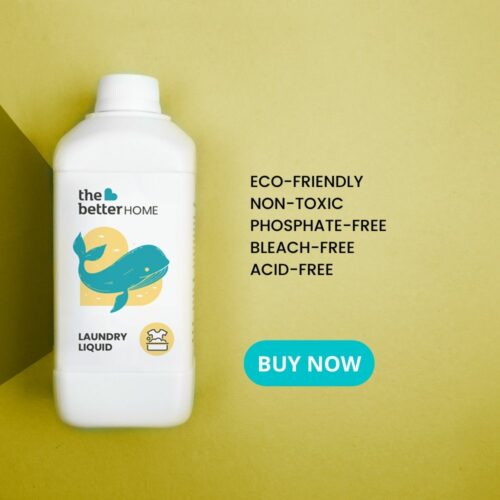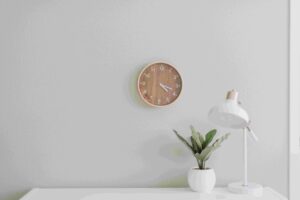Stop Dirtying the Planet: 5 Homemade Alternatives to Replace Chemical Cleaners
Common cleaning products are often petroleum-based and have negative health and environmental impacts. Turn instead to natural, homemade alternatives that can clean your house without toxic side effects.

FFrom the air fresheners that claim to make our living rooms smell like an ocean breeze to the fabric softeners that have us dreaming of baby-soft sheets, common commercial cleaners come with heavy promises and are designed to make domestic life easier. The cost of using them, however, can be high and their effects, long-term. From the toxic chemicals used in their manufacture to their single-use packaging, these products are harmful to human health and that of the environment.
Here are 5 common cleaning products, the chemicals they contain, their impacts on health and the non-toxic, eco-friendly alternatives you can make at home using some simple, easily available ingredients.
Air freshener
Air fresheners are designed to emit a pleasing fragrance, mask odours and create a soothing environment. They are typically used indoors, in schools, gyms, hospitals, offices, transportation and other spaces. As great as they may smell, air fresheners can emit a variety of potentially hazardous chemicals that pollute indoor air and make it toxic. This happens to a greater extent when they are used in spaces that have poor natural ventilation – such as bathrooms and air-conditioned offices and malls.
Most commercial air fresheners, even those that claim to be natural, are made with a variety of ingredients that manufactures are not obligated to disclose. So, while your sachet of freshener may claim to smell of cinnamon, its ingredients are far from innocuous. Studies have found that air fresheners can emit over 100 different chemicals including volatile organic compounds (eg. benzene, ethanol and formaldehyde). They also react with indoor air to produce pollutants. All forms of air freshener, from gels and sprays to sachets and diffusers were found to be equally harmful.
From a human health perspective, synthetic air fresheners have been linked to migraine, headache, asthma, breathing difficulty and a variety of illness in infants.
Make your own air freshener: Use a toothpick to poke a few holes in the rinds of a few fresh, firm, whole oranges. Insert a clove into each hole. Place the spiced oranges in a bowl and set them around the house as natural air fresheners. You could also hang them up in your windows. Play around with spices by sprinkling powdered cinnamon, clove or nutmeg on the orange to add a variety of fragrances. Keep an open box of baking soda in your refrigerator or shoe cupboard to get rid of odours.
Moth repellents
Moths and other insects can wreak havoc to a wardrobe in weeks, destroying clothes and linens. The risk of moth infestation is even greater now that most of our garments are in disuse. However, if you are thinking of protecting your garments by throwing a fistful of mothballs in your cupboard, think again. Most common mothballs contain either naphthalene or paradichlorobenzene. Mothballs work by turning from solids to gases when exposed to air and their fumes are toxic to insects. Both of these chemicals are harmful to human health. Naphthalene is known to be a carcinogen and banned in several countries. The fumes from mothballs irritate the eyes and nasal pathways, cause nausea, dizziness and headaches and are linked to a condition called hemolytic anaemia wherein the red blood cells break apart.
Moths are attracted to damp, soiled fabric so air out unused clothes frequently and dry them in the sun. Dry clean or wash them with a mild, gentle detergent such as The Better Home before storing them. Store delicate and expensive garments in tightly sealed bags that moths cannot get into.
Keep moths at bay by making your own repellent: Dry a handful of rose petals. Sprinkle them with a few drops of lavender or rosemary essential oils. Create your own moth-repellent sachet by filling the petals into tea bags or pieces of cheesecloth. You can also use dried lemon peel, cloves or eucalyptus to make an effective natural moth repellent.
Carpet and upholstery fresheners
We add textiles to our homes to bring in texture, colour and comfort. But while carpets, upholstery and drapes make a room look good, they are also magnets for dust, stains, and if you have pets, fur. In the monsoon, carpets and rugs harbour mold, mildew and bacteria. Most of us get rid of dirt on carpets and rugs with a quick spray of stain remover. But most commercial carpet cleaners contain a laundry list of synthetic chemicals such as bleach, brighteners, dyes, fragrances, preservatives, solvents and surfactants.
If you cannot find a safe, non-toxic carpet and upholstery remover, get rid of stains and odours by mixing equal parts white vinegar and water in a spray bottle. Spray directly on the stain, let sit for several minutes, and clean with a brush or sponge using warm soapy water. For food or grease spots, sprinkle cornstarch onto the stain and wait for an hour before vacuuming
Ceramic and glass cleaners
Many owners of ceramic and glass cooktops and utensils turn to cleaners containing ammonia, bleach and other caustic agents. Not only are these abrasive chemicals that can discolour your dishes, but they are also known to harm the respiratory system and aggravate asthma with repeated and prolonged exposure.
Replace harsh cleaners with a vinegar spray or a warm soap solution. Wipe the cooktop with the soapy water and sprinkle baking soda to get rid of food particles. Cover with a damp towel and let sit for an hour before wiping off with a damp sponge or cloth.
Wood polishes
Historically plant-based oils and waxes such as linseed or palm oil, beeswax and animal fats were used to polish wood. Polishing wood is not just to add to its aesthetic quality but also to protect it and extend its life by preventing it from drying out, staining and cracking. Today, most wood polishes are a combination of polishing agents, solvents, emulsifiers, fragrances and dyes. Some commonly used ingredients include paraffin and other petroleum-based waxes, turpentine, naphtha and, in case of aerosol-based waxes, propellant gases such as propane and butane. The propellants, fragrances and solvents used in furniture polish can affect indoor air quality. They are also known to give off formaldehyde, a carcinogen.
Lend your furniture a natural shine by mixing 2 parts vinegar with 2 parts vegetable oil and 1 part lemon juice. Whisk well to form a homogenous mixture. Dip the end of cloth into the mix and apply to your wooden surfaces. You could also store the solution in a spray bottle and use as needed.
If you found our stories insightful, informative, or even just enjoyable, we invite you to consider making a voluntary payment to support the work we do at The Better India. Your contribution helps us continue producing quality content that educates, inspires, and drives positive change.
Choose one of the payment options below for your contribution-
By paying for the stories you value, you directly contribute to sustaining our efforts focused on making a difference in the world. Together, let's ensure that impactful stories continue to be told and shared, enriching lives and communities alike.
Thank you for your support. Here are some frequently asked questions you might find helpful to know why you are contributing?


This story made me
-
97
-
121
-
89
-
167















